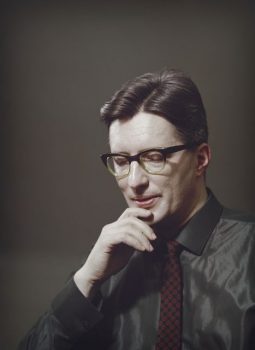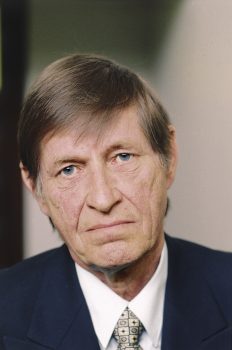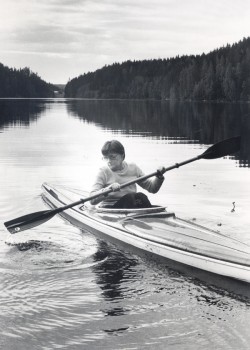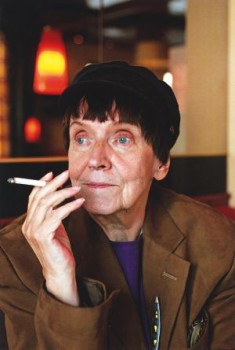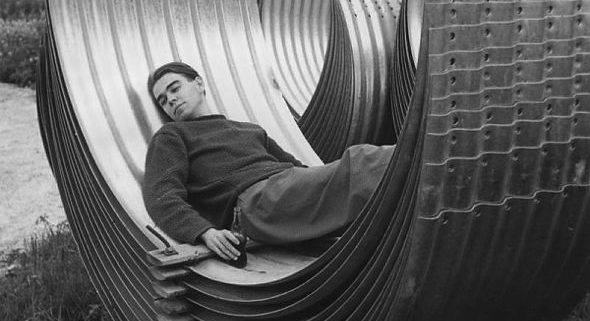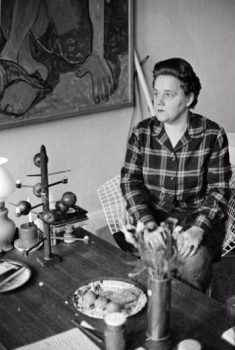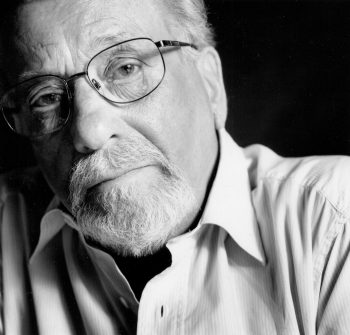Tag: classics
Poems
Issue 2/1979 | Archives online, Children's books, Fiction, poetry
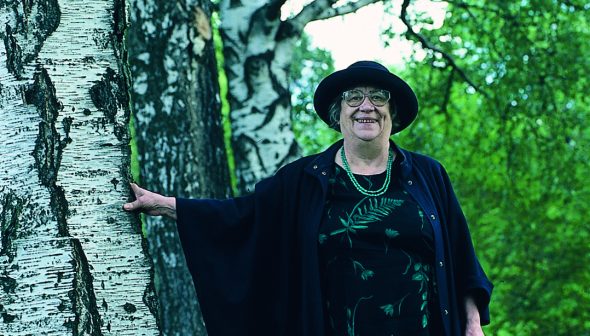
Kirsi Kunnas. Photo: Jyrki Luukkonen
Poems from Tiitiäisen satupuu (‘The Tittytumpkin’s fairy tree’, 1956)
The old water rat
There’s a shiver of a reed,
a rustle in the grass,
a slop-slopping through the mud:
Who’s that puffing past?
Who’s that peeping there?
A whiskery head
and a muddy tread.
It’s Old Mattie
Water Rattie.
Squeezing water from his eyes,
trickling from his sneezing nose,
freezing and sneezing.
Then: Oh dear Misery!
A-snee, a-snee, a-snizzery! More…
Poems
Issue 1/1979 | Archives online, Fiction, poetry
Poems from Lähdössä tänään (‘Leaving today’, 1977) Introduction by Jouko Tyyri
1
‘The wind’s speaking.’ If the wind were really speaking
could we endure its words
so void, flinty, so groping?
Inside them
they have
salt, horror,
mania: a long-drawn black speechless
roller that wipes the coast clean
of houses, woods, junk. It swashes
your eyes. If I’d had some
feeling. Or thought. If
I was something. If I was I.
It’s gone.
There’s nothing here. Only a draught.
The air moving back and forth, soon to drop.
2
Orlando di Lasso's melodies
airy, without a touch of soil
a little dust on
as much as might be on a butterfly's wing
only just so much
Orlando himself, four hundred years
remoulded into loam, coalesced with dust
just like you, you, just like you More…
Poems
Issue 4/1978 | Archives online, Fiction, poetry
Poems from Kuolleet vedet (‘Dead waters’). Introduction by Aarne Kinnunen
1
A faraway tucked-away room
Leathery harness odour
An obscure carriage house
A mighty delay
And out through a narrow gate slipped childhood
And a pony cart was coming to get us
swishing on the sand
White gloves on the coachman
and ornamented with a whip, the lash sounding
We were driving through spotted leaves
Lustre, dolour, lustre,
remembrance, snow
And suddenly the driver was gone
and nothing but hands were gripping the horse
and they were leading me I don’t know where. More…
Meetingplace the year
Issue 2/1978 | Archives online, Fiction, poetry
Poems from Kohtaamispaikka vuosi (‘Meetingplace the year’, 1977). Introduction by Mirjam Polkunen
1.
I look in from the gateway
there are children, there in the yard playing.
They look small from here, remote.
From the years
I have walked past this gateway,
there they are: five, six.
The same number.
They have a ball in the air, they yell at it.
Silly that I still here too
remember you,
I could be the same age now.
More…
Poems
Issue 4/1977 | Archives online, Fiction, poetry
Poems from Tanssilattia vuorella (’The dancing-floor on the mountain’). Introduction by Pekka Tarkka
I
Having studied
Krinagoras
the flower of Philippos’ wreath
under the vaults in a cool library far away in silence
I have gone to see the boat how it is coming on
whether it will be in working order next summer
we have no strong men
have sat on the beach-hut steps thinking of him
the politician the negotiator:
poetry is a holding of council, an art of negotiation More…


